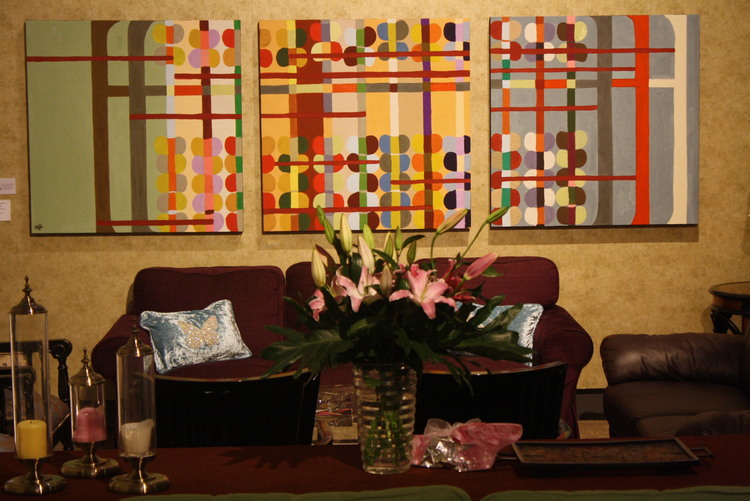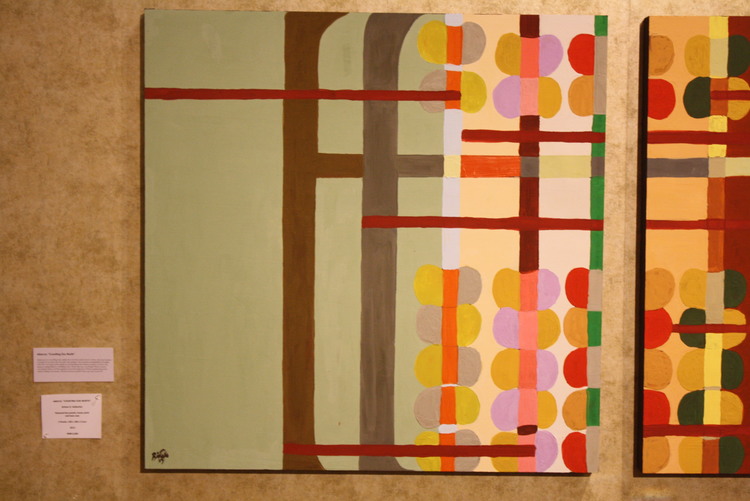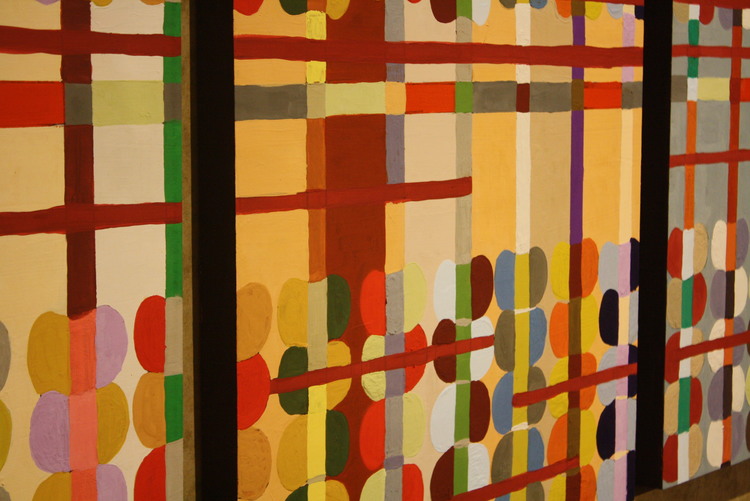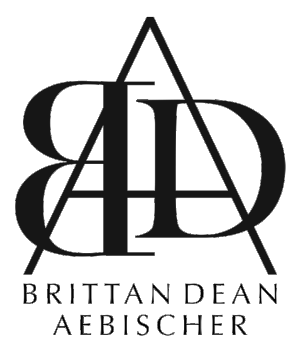Index
A CHINESE QUESTION
Xiangqi: “A Game For Evolution” - 3 Panels, 250cm x 100cm each - Mixed media on wood
Camera man standing in front of Xiangqi: “A Game for Evolution” at the “OrientAsian” Show in J&Z Gallery
Xiangqi: "A Game For Evolution"
“Xiàngqí”, meaning Chinese chess, is a favorite strategy game played by most Chinese. In this piece the Xiàngqí board is an internal structure for man to “strategize” and “evolve” upon. However, in the piece presented, instead of two players, there is only one. Instead of strategizing, the pieces have not been moved. Rather, the board has been adapted and used as a potential platform for growth but yet a foundation for evolutionary stagnation. In response to forced birth control, this piece provides “thinking space” for the human psych. Whether good or bad, wrong or right, is the control over an animal’s ability to reproduce natural?
Abacus: “Counting Our Worth” - 2013 - 3 panels, 100cm x 100cm - mixed media on wood panel
Abacus: "Counting Our Worth"
Abacus is a counting tool. Used all over the world and in China, this mechanism is simple in function but its uses are endless. The question presented coincides with the 12 rungs of the abacus. Symbolizing the twelve zodiacs of time, the abacus presented is a thinking tool. What are we counting? What is worth counting? Time is of the essence and the essence of time is preserving that which makes us human. What is human worth? How can we count it?
Wound: “Altered Beyond Our Sake” - 2013 - undefined size - comprehensive mixed media and found objects
Wound: “Altered Beyond Our Sake”
An altar is often an object associated with organized religion, whether presently practiced or practiced by our ancestors. The altar is a place of release for our emotions that often we cannot understand, control or honestly confront. Many times, objects have become a symbol for what we as humans are willing to give up upon the belief that a “higher” power has the ability to confront, and more importantly, comfort our uncontrollable feelings.
In this piece, the altar is of the “great wound”. A wound is an open intrusion of the skin. Wounds get infected and it is with great hast that they should heal or infection will prevail. Often we as humans live with wounds internal and external, physical or emotional. Over time the pain of the wound becomes acceptable and the tissue around it becomes scarred. To some extent, we live with wounds for so long that we rely on them for our identity and it becomes a sacred “being”, sucking the life out of our true selves as we frantically feed it and build it up with our time, money and prayers.
Images of the work shown at J&Z Gallery, April 20, 2013, “OrientAsian” Group Show
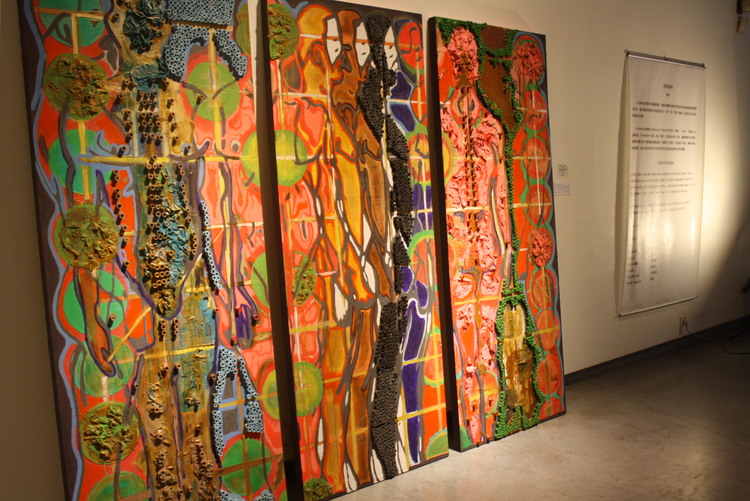

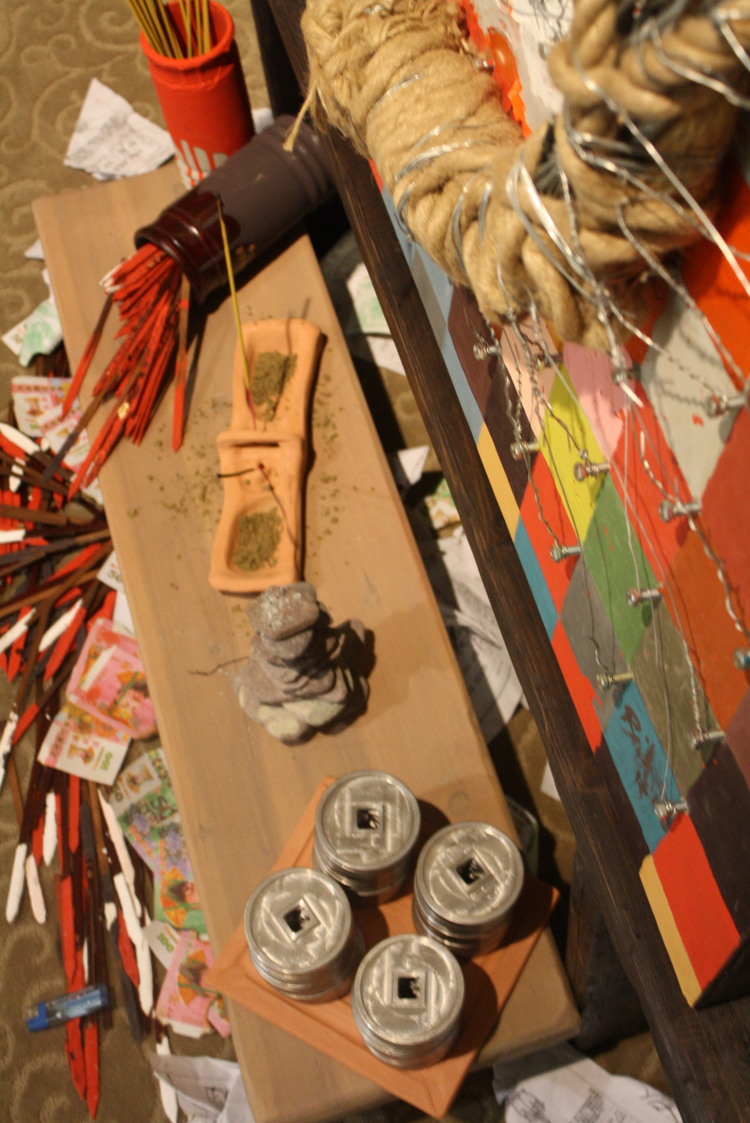

![56 Ancient Coins [Wound: "Altered Beyond Our Sake] @ J&Z Gallery](https://images.squarespace-cdn.com/content/v1/5158f761e4b02f77ba79c4cf/1550635968810-2E72H3UF9DDMJS025JRD/IMG_0360.jpeg)
